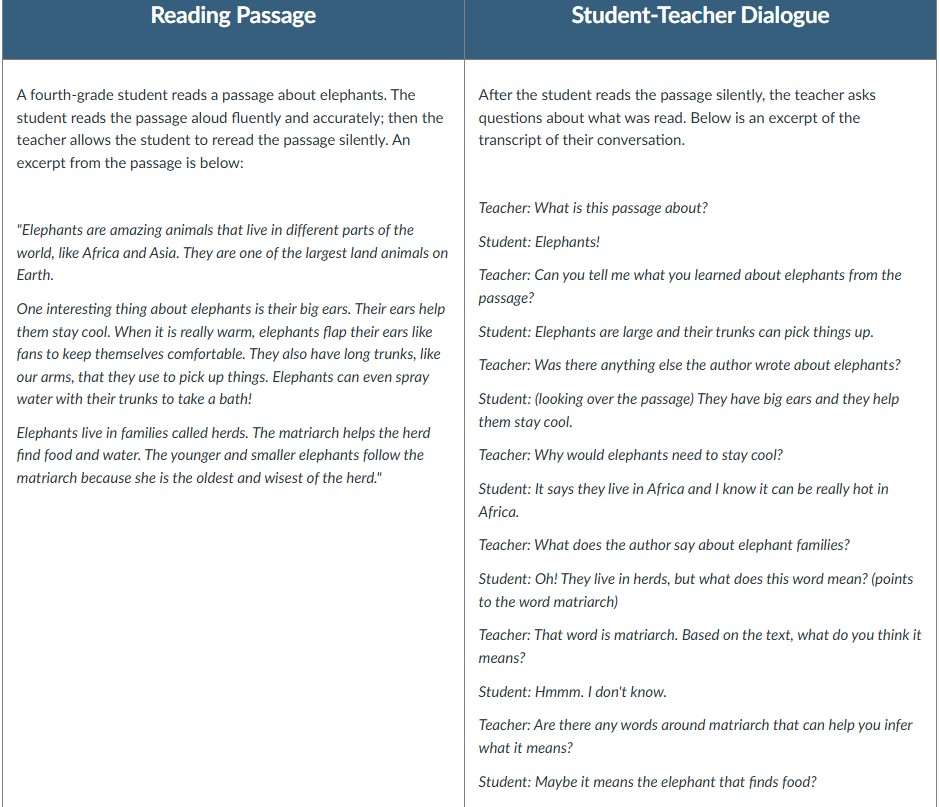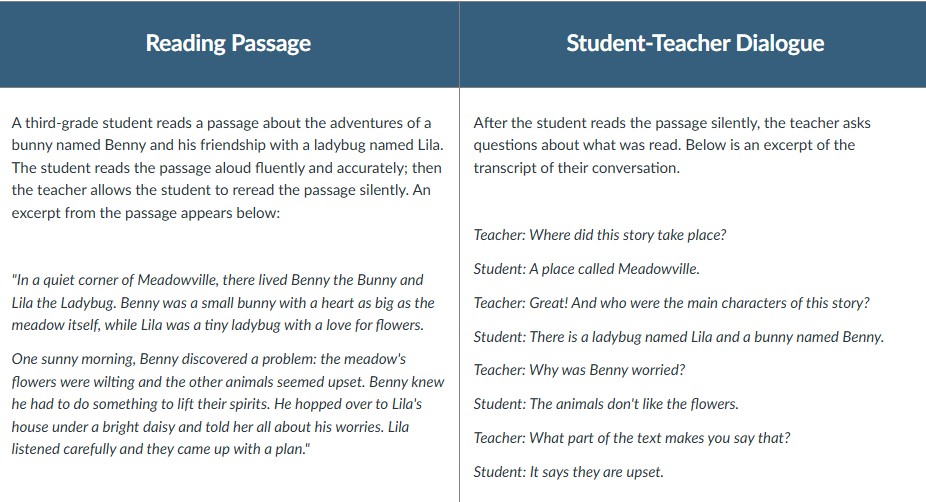FORT Reading Comprehension Skills Prep Response
1/12
There's no tags or description
Looks like no tags are added yet.
Name | Mastery | Learn | Test | Matching | Spaced |
|---|
No study sessions yet.
13 Terms
Vocabulary
Receptive & Expressive vocabulary
Receptive vocabulary
Understanding words that are heard or read.
Expressive vocabulary
Words used to express thoughts when writing or speaking.
Contextual Analysis
A method of examining a "text" (which could be anything from a piece of writing to a photograph or even a behavior) by considering its surrounding circumstances, including its historical, social, cultural, and situational context.
Tier 1 conversational words
Tier 2 academic words
Tier 3 content-specific words
Tiered vocabulary includes….
Literal comprehension skills
understanding what the text says:
Main idea (when stated in the text)
Facts
Sequence of events
Characters' names
Inferential comprehension skills
determining what the text means
Generalizations
Cause & effect relationships
Predictions
Identifying an unstated main idea
Evaluative comprehension skills
ability to analyze, synthesize, and assess the text content
Thinking critically
Connecting ideas across texts
Making judgements
Applying to real-world situations
Comprehension strategies
making connections, asking questions, visualizing, inferring, determining importance, summarizing'
Somebody wanted but so then strategy (history) or fiction
rereading
modeling
timeline
cause and effect
compare and contrast
scaffolding
Small group explicit instruction
Exemplars
Main idea and key detaqils graphic organizer
Story map (fiction)
Concept map (semantic map)
Interactive read alouds
rereading
KWL Chart (background knowledge)
Text features
Text analysis
Techniques that help with comprehension
Evaluating word choice
Identifying nonfiction text structures and author choice
Factors that may affect comprehension
Background knowledge
Vocabulary knowledge and language skills
Reading fluency
Student Strength
The teacher begins by asking the student questions that require literal and inferential comprehension skills and the student answers the questions correctly. For instance:
What is this passage about?
Can you tell me what you learned about elephants from the passage?
Was there anything else the author wrote about elephants?
Why would elephants need to stay cool?
Student Need
When the teacher asks the student questions requiring contextual analysis to determine the meaning of unknown words, the student answers the questions incorrectly.
That word is matriarch. Based on the text, what do you think it means?
Are there any words around matriarch that can help you infer what it means?
Read the nonfiction passage and student/teacher dialogue and decide the student’s strength and need:

Student Strength
The teacher begins by asking the student questions that require literal comprehension skills and the student answers the questions correctly. For instance:
Where did this story take place?
Who were the main characters of this story?
Student Need
When the teacher asks the student questions requiring inferential comprehension skills, the student answers the questions incorrectly.
Why was Benny worried?
What part of the text makes you say that?
Read the fiction passage and the student/teacher dialogue and decide the students strength and need:
